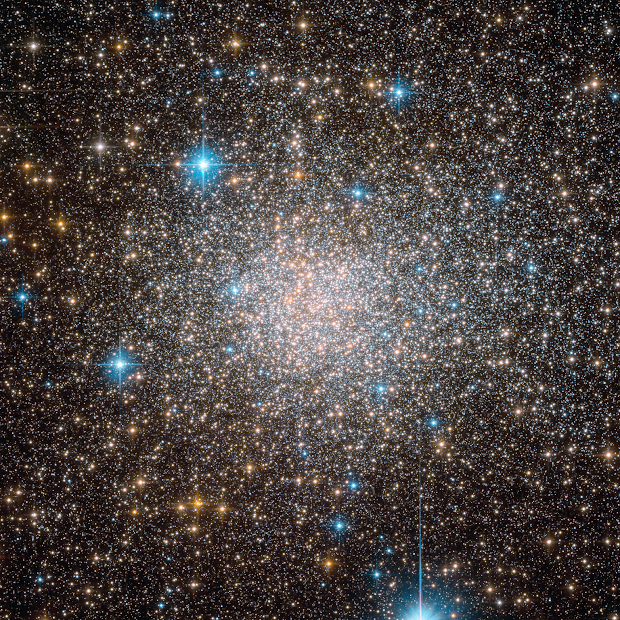Click on the image for higher resolution (4.0 MB)
Peering through the thick dust clouds of the galactic bulge an international team of astronomers has revealed the unusual mix of stars in the stellar cluster known as Terzan 5. The new results indicate that Terzan 5 is in fact one of the bulge's primordial building blocks, most likely the relic of the very early days of the Milky Way. Observations were made with the Wide Field Camera 3 (WFC3) on board the Hubble, the Multi-conjugate Adaptive Optics Demonstrator (MAD) instrument on ESO's Very Large Telescope and the second generation Near Infrared Camera at the Keck Telescope.
Terzan 5, 19,000 light-years from Earth, has been classified as a globular cluster for the forty-odd years since its detection. Now, an Italian-led team of astronomers have discovered that Terzan 5 is like no other globular cluster known. The team scoured data from the Advanced Camera for Surveys and the Wide Field Camera 3 on board Hubble, as well as from a suite of other ground-based telescopes. They found compelling evidence that there are two distinct kinds of stars in Terzan 5 which not only differ in the elements they contain, but have an age-gap of roughly 7 billion years. The ages of the two populations indicate that the star formation process in Terzan 5 was not continuous, but was dominated by two distinct bursts of star formation. Its unusual properties make Terzan 5 the ideal candidate for a living fossil from the early days of the Milky Way. Current theories on galaxy formation assume that vast clumps of gas and stars interacted to form the primordial bulge of the Milky Way, merging and dissolving in the process.
Image Credit: NASA/ESA/Hubble/F. Ferraro
Image enhancement: Jean-Baptiste Faure










0 comment(s):
Post a Comment